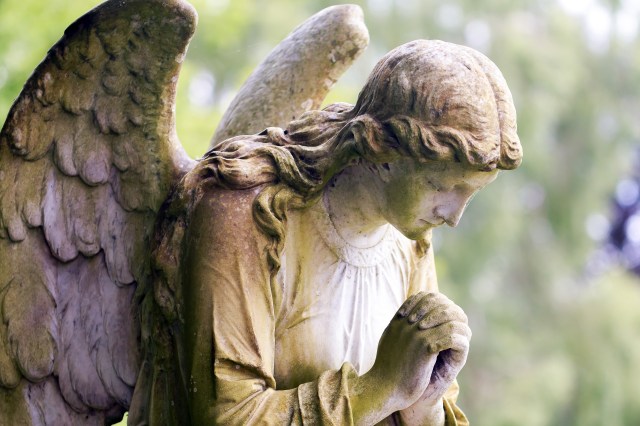Believing in the existence and action of angels is always a matter of faith, but this invisible presence is eminently consistent with human reason, shows Father Jean-Baptiste Édart, dean of the faculty of theology at the Catholic University of ‘West.
Current culture places an important place on angels. Just browse the sections dedicated to spirituality (in the broad sense) in large bookstores, or watch the programs offered by VOD sites. Believing in God can be difficult, but believing in the existence of angels poses no problem for many contemporaries. However, it is appropriate to exercise discernment.
The angels who invade our screens, frequent websites and Netflix series, have little to do with the angels of the Judeo-Christian tradition. What trace have our celestial friends left in literature, painting, sculpture, and even science, as well as on the theological presuppositions of these representations?
The angels of superstition
The contemporary angel is not a personal being created by God out of love to participate in his action. It is often presented as a vibrational energy, a radiance of the divinity itself understood as an energy. Many names are attributed to these beings, whose main reason for existence is not the glorification of God and the service of his creation, but the satisfaction of the immediate needs of our humanity: the need for protection, healing, power and consolation. More than their nature, it is the way of using their help that will be sought.
In this perspective, it will be important to know their name, but also the star or sign of the zodiac to which they are linked. The very verbose authors will thus resort to Kabbalah to identify the angel responsible for legal affairs, or problems of the heart, work, etc. This is how we will determine a time to invoke them and the modality of this invocation. Everything is specified so that it works. We are not in a communion of love, but in a magical and superstitious process where the performance of a specific ritual is supposed to subdue a celestial power to obtain a benefit.
A source of balance necessary for salvation
Very different is the angelic figure encountered in the Jewish and Christian faiths. It contrasts sharply with the modern figure mentioned above. It is necessary to remember that belief in the angelic world has crossed the centuries, including in philosophy, finding roots in the Greek world with the figure of Hermes, and Mesopotamian, even if at the time they had not not yet necessarily gained their wings, a reality that appeared after the 6th century BC. AD
The created world has never been limited to the visible world, but has always included an invisible world whose interaction with visible reality has always been recognized.
The created world has never been limited to the visible world, but has always included an invisible world whose interaction with visible reality has always been recognized. Certainly, this action could have been perceived through causalities today perceived as natural. The movement of the stars is no longer considered the fruit of angelic action. Nevertheless, their action, in the midst of natural causes, appeared as a source of balance to allow the realization of the plan of salvation, despite the evil action of fallen angels and the sin of man.
This invisible presence appeared as a true support to humanity. Their activity, through the auscultation of the Gospel of Luke, the liturgy of Saint John Chrysostom , texts of Saint Hildegard , Saint Francis de Sales , Saint Thérèse of the Child Jesus or in the study of authors of great literature (Saint-Amant, Péguy , Claudel , etc.), appears inseparable from the history of men. This presence seems necessary to manifest divine glory and guide humanity on the narrow path of perfect life. The numerous testimonies in painting and sculpture bear witness to this mission as teachers of the celestial life which they continue to fulfill, whether on the tympanums of our cathedrals, in the mandorlas of pictorial representations of divine glory or in a painter like Chagall .
Consistent with reason
The philosophers, including Kant, were not mistaken. The perfection of the created world requires recognition that spiritual creatures exist, but to be reasonable, faith in these creatures requires that they be conceived in close dependence with a transcendent Creator and in the service of his loving project. If believing in angelic existence and action will always fall within the object of faith, the fact remains that this presence is eminently consistent with human reason, and the place it occupies in art testifies not against it, but on the contrary, attests to its deep coherence with the heart of the man who knows how to see the invisible.
